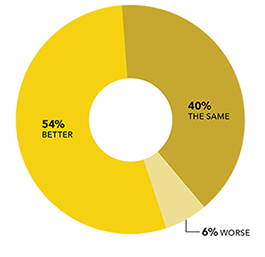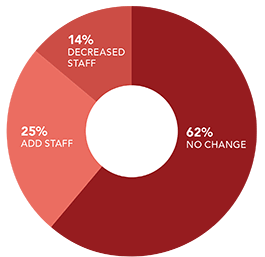2019 Job Outlook: ‘Selling’ the safety profession
Professional organizations and safety pros work to raise the profile of OSH


Making the case to employers
“The business mentality around safety has changed a lot in the last 20 to 30 years,” said Kristen Chipman, EHS supervisor at Pittsfield, ME-based Cianbro Corp. and chair of the NSC Young Professionals Division, “and more businesses are identifying it as an area they need to focus on.”
Learn more about the NSC Young Professionals Division.
However, employers who hire safety professionals simply to avoid running afoul of OSHA are plentiful, and the task of making the case for safety – to workers and upper management – often falls to those same safety pros, who “have to do a lot of education and training within their own business unit, fighting the misconceptions that safety is a waste of time, safety costs a lot of money, safety makes my job go slower,” Chipman said.
To shift this burden, ASSP’s recently formed Council on Academic Affairs and Research is pushing for more business leaders to come prepared with a working knowledge of OSH.
“Prevention programs that optimize worker health and safety are essential to businesses’ bottom line,” said ASSP Vice President Jim Ramsay, professor of security studies at the University of New Hampshire, “but there’s not an MBA program in the country that requires business majors to understand things like occupational safety and health. So getting more of our strategies and tactics into the hearts and minds of people that run businesses is critical.”
Making the case to academia
Experts say educational opportunities in OSH are growing, with more safety programs promoting skill sets that go beyond compliance – even online safety degrees are coming onto the scene. However, the bright future of OSH education may be clouded by a lack of investment. In the NIOSH survey, a second barrier cited by education providers was a decline in college and university funding for OSH programs, particularly those not funded by NIOSH.
Further, even NIOSH funding has been threatened in recent years. “One of NIOSH’s prime missions is to nurture the field of occupational safety and health professionals,” Dooley said, “and they primarily do that through their Educational Research Centers program, which funds university-based regional academic programs.”
Dooley said protecting and growing these programs is essential to the safety field’s ability to widen its pool of candidates and attract the diversity needed to serve workers of different nationalities and who speak other languages. “The ERCs need to be available so that students of all backgrounds have those educational opportunities, but funding for those programs has been constantly under attack,” he said.
ASSP’s Council on Academic Affairs and Research is calling for safety degree programs around the country to make another kind of investment in the future of the profession: program-level accreditation. To gain the kind of status and public recognition that OSH merits, Ramsay argued that the profession must define itself by establishing consistent educational standards.
“The sovereignty of a profession means that there are barriers to occupational entry,” he said. “The profession knows what it is and what it isn’t, and those ideas are usually contained in a series of educational standards that define the requirements for that profession – technical and knowledge-based competencies, operating expectations, and ethical and professional obligations.”
Currently, ASSP lists only 20 accredited programs nationwide.
| What's the Job Outlook for Safety+Health readers? Browse the results of our 2019 survey. | ||
 Job market |
 Department staffing |
 Personal outlook |
Making the case to students
Professional organizations are looking for ways to reach students at a younger age and lay out a clear career path. A prime example is BCSP’s “Choose Safety” campaign, launched in 2017.
“We define the path from initial interest to building one’s knowledge in a trade or accredited college, entering the profession with a designation, and continued professional advancement with a recognized certification,” Turnbeaugh said. “The audience includes college students looking to choose a major; university faculty in safety, health and the environment; high school youth planning their future; and school counselors seeking ways to engage and support students.”
Learn more about the "Choose Safety" campaign.
Many organizations are also stressing the importance of mentoring programs and student internships. For example, in addition to offering free membership to students pursuing a safety degree, the Young Professionals Division at NSC recently introduced a mentorship program that pairs active safety professionals with student members to provide educational guidance, career advice, and information on internships and work opportunities.
According to Dooley, OSH professional groups have created programs designed to inspire teens and young workers to get involved in the field by giving them “a chance to experience not only the issues that they may face at work, but how important it is that workers know what their rights are.”
|
NEXT How to "sell" safety |
> |
Post a comment to this article
Safety+Health welcomes comments that promote respectful dialogue. Please stay on topic. Comments that contain personal attacks, profanity or abusive language – or those aggressively promoting products or services – will be removed. We reserve the right to determine which comments violate our comment policy. (Anonymous comments are welcome; merely skip the “name” field in the comment box. An email address is required but will not be included with your comment.)

